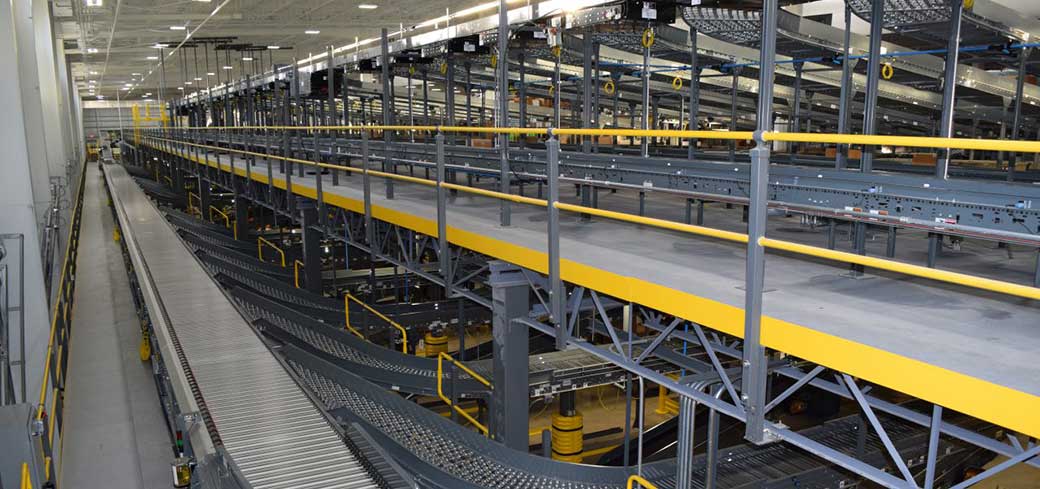
Image Source: Google
In today's fast-paced business world, efficient supply chain management is crucial for organizations to stay competitive and meet the demands of the market. Warehousing plays a vital role in this process, transforming from a mere storage facility to a dynamic hub that revolutionizes supply chains. Let's delve into how modern warehousing practices are reshaping the way businesses manage their inventory and meet customer expectations.
The Evolution of Warehousing
Warehousing has evolved significantly over the years, shifting from being just a place to store goods to becoming an integral part of the supply chain network. Modern warehouses are now equipped with advanced technologies and systems that optimize operations and enhance efficiency. Here are some key aspects of the evolution of warehousing:
Automation and Robotics
- Automated storage and retrieval systems (AS/RS) improve inventory management and reduce the need for manual labor.
- Robotics technology streamlines order fulfillment processes and increases accuracy.
- Drones are used for inventory tracking and management in large warehouses.
Data Analytics and AI
- Advanced analytics tools provide real-time insights into inventory levels, demand forecasting, and stock optimization.
- Artificial intelligence (AI) algorithms help in predicting trends, optimizing routes, and improving overall warehouse operations.
- Predictive maintenance using AI reduces downtime and enhances equipment reliability.
Key Benefits of Modern Warehousing
Implementing modern warehousing practices offers a wide range of benefits for businesses looking to streamline their supply chain operations and improve customer satisfaction. Let's explore some of the key advantages:
Improved Inventory Management
- Real-time tracking of inventory levels helps in preventing stockouts and overstock situations.
- Automated systems ensure accurate and efficient inventory counts, reducing the risk of human error.
- Advanced forecasting tools enable businesses to anticipate demand and plan inventory levels accordingly.
Enhanced Efficiency and Productivity
- Automation of repetitive tasks speeds up order fulfillment processes and reduces lead times.
- Optimized warehouse layouts and picking strategies minimize travel time and maximize operational efficiency.
- Data-driven insights help in identifying bottlenecks and implementing process improvements for increased productivity.
Impact on Supply Chain Management
The evolution of warehousing has a profound impact on overall supply chain management, enabling organizations to operate more efficiently and effectively. Modern warehouses serve as strategic hubs that facilitate seamless coordination between suppliers, manufacturers, and customers. Here are some ways in which warehousing revolutionizes supply chain management:
Just-in-Time Inventory
- Modern warehousing practices support the just-in-time (JIT) inventory model by enabling quick and accurate order fulfillment.
- Reduced lead times and improved inventory visibility help in minimizing excess inventory and storage costs.
- JIT inventory management enhances supply chain responsiveness and agility in meeting changing customer demands.
Enhanced Customer Service
- Efficient warehousing operations result in faster order processing and delivery, leading to improved customer satisfaction.
- Advanced tracking systems provide customers with real-time updates on their orders, enhancing transparency and trust.
- Strategically located warehouses enable businesses to offer faster shipping options and meet customer expectations for speedy deliveries.
Future Trends in Warehousing
As technology continues to advance, the future of warehousing holds even more exciting possibilities for supply chain innovation. Here are some emerging trends that are shaping the future of warehousing:
Blockchain Technology
IoT Integration
- Blockchain technology enhances transparency and security in supply chain transactions, reducing the risk of fraud and errors.
- Smart contracts enable automated and secure agreements between various stakeholders in the supply chain network.
- Blockchain-based systems improve traceability and accountability in warehouse operations, ensuring compliance with regulations.
- The Internet of Things (IoT) enables interconnected devices and sensors to collect real-time data on warehouse operations and inventory levels.
- IoT integration enhances visibility and control over the supply chain, leading to proactive decision-making and risk management.
- IoT-enabled devices optimize warehouse space utilization and improve asset tracking for better inventory management.
